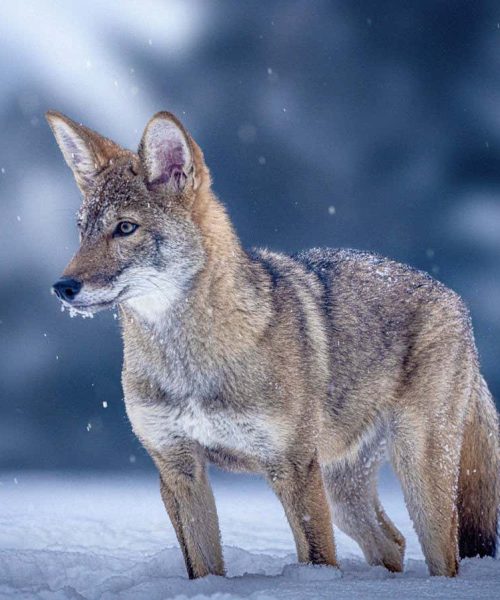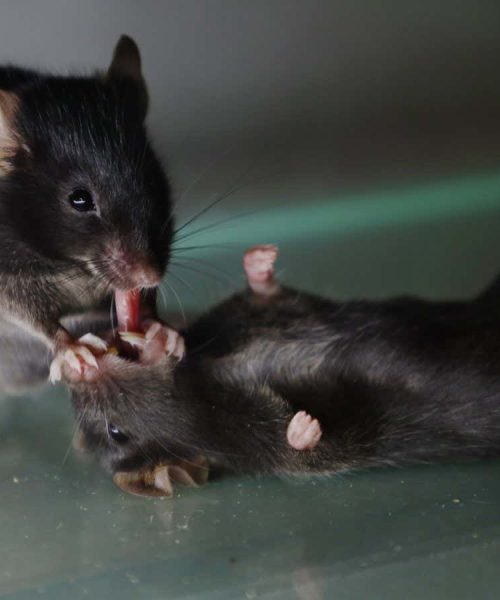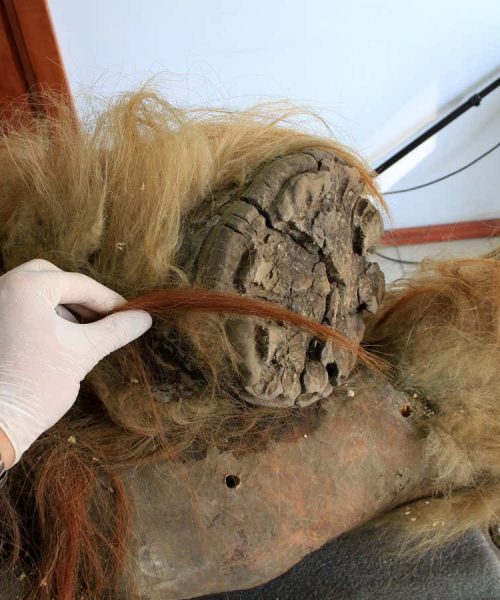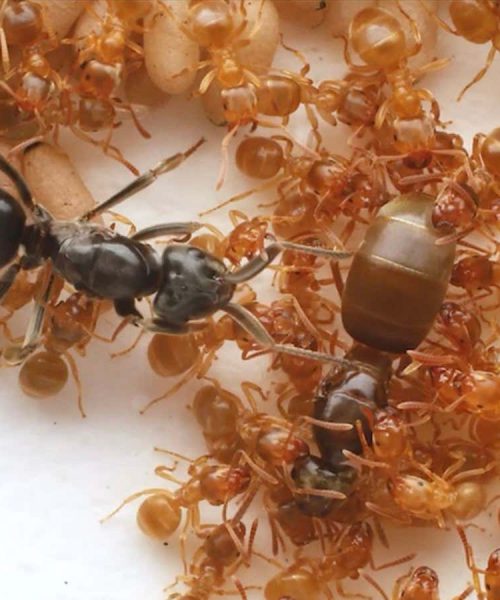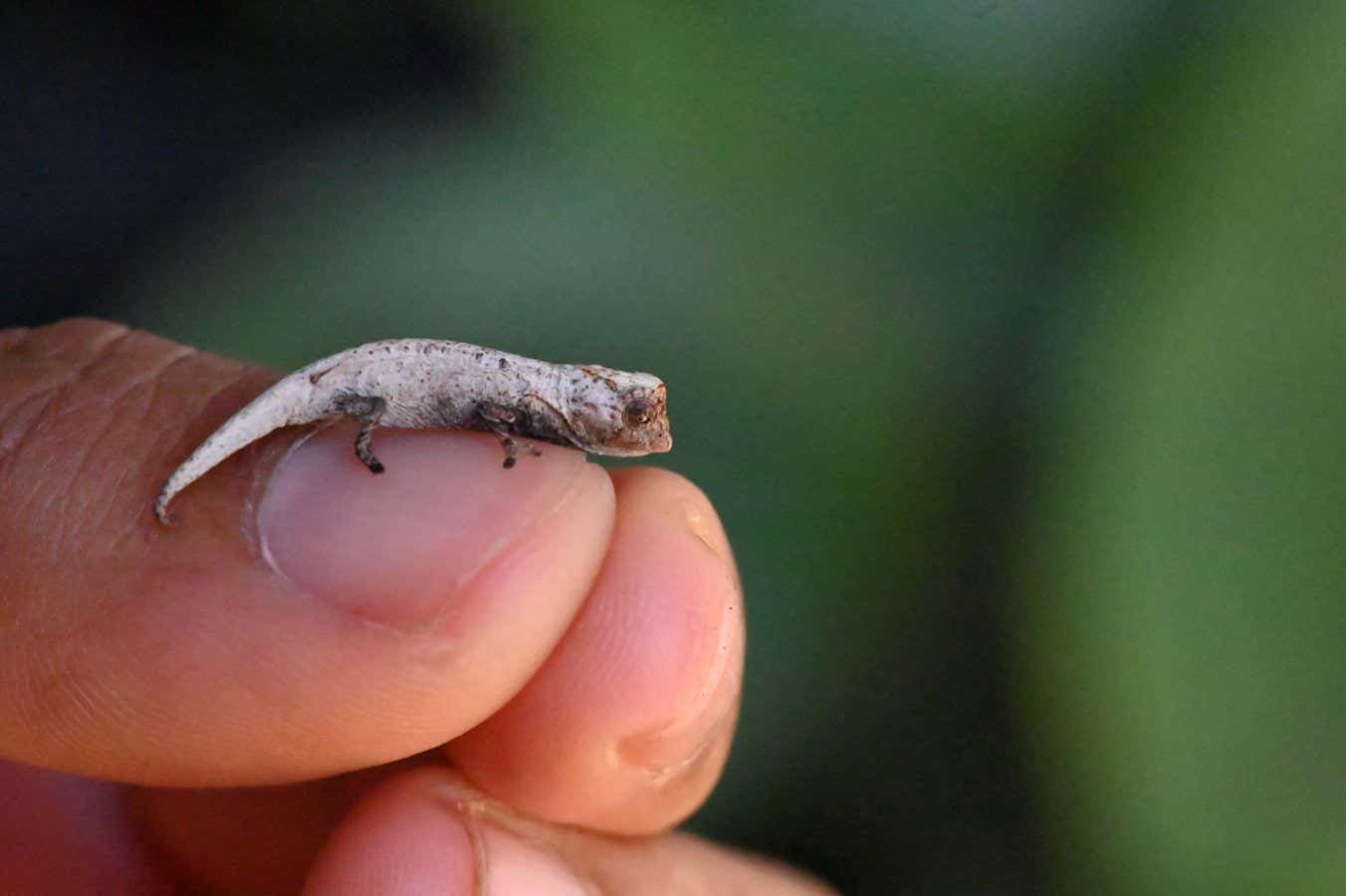
A leaf chameleon from the newly named species Brookesia nofy, found in Madagascar
Andolalao Rakotoarison
A species of leaf chameleon new to science, measuring less than half the length of a human forefinger, has been discovered in a tiny patch of Madagascar’s highly threatened coastal rainforests.
Miguel Vences at the Technical University of Braunschweig in Germany and his colleagues were alerted to its presence by tourists posting photos of the tiny reptiles on the internet.
Advertisement
Vences’s Malagasy collaborators, Andolalao Rakotoarison and Alida Frankline Hasiniaina, went looking for it and collected the first sample.
Leaf chameleons, from the genus Brookesia, are miniature chameleons the colour of fallen leaves that have been breaking records for their small body sizes in recent years.
Brookesia nana, for example, described in northern Madagascar in 2021, is just 22 millimetres long and is thought to be the world’s smallest reptile.
The new species, named Brookesia nofy after the Ankanin’ny Nofy tourist site where it was found on Madagascar’s eastern coastline, is only slightly bigger at around 33 millimetres long. It is the first leaf chameleon to be found living in coastal or littoral, rainforests – arguably the island’s most threatened habitat. Once extensive, only around 10 per cent remains.
It is possible B. nofy has only survived because the forest patch where it is found is part of a private reserve run by a hotel whose owners have allowed trees to regenerate over the past 20 years. The species was also photographed by a local journalist five years ago in a bigger patch of forest nearby, but when Vences and his colleagues visited two years ago, they witnessed a large part of that forest being destroyed by bushfires.
Supporting ecotourism ventures that give international tourists a chance to view Madagascar’s rare chameleons alongside lemurs probably outweighs the heavy carbon footprint needed to travel there, says Vences.
“If people don’t see an economic value in the little patches of [surviving littoral] forest, the forest will be gone,” he says.
Topics:
